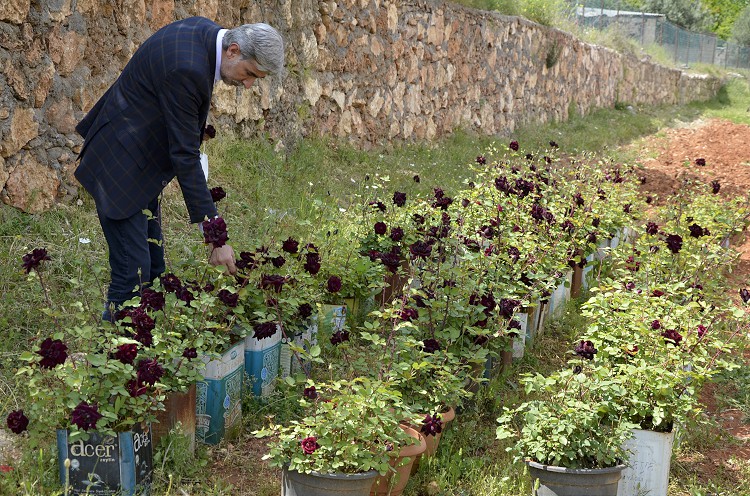Unique, the black rose of Halfeti, which could have sunk in the waters of the Birecik dam on the Euphrates, survives, transplanted and preserved on the heights of this submerged village, in the south-east of the country.
Black in bud, black when drying, dark purple in between, the Karagül (black rose, in Turkish) with its remarkable and powerful fragrance is unique and only grows here, in Halfeti, in the Anatolia region. from southeastern Turkey. It almost disappeared, drowned forever like dozens of archaeological sites of ancient Mesopotamia. But the passion of an official from the local Department of Agriculture, who transplanted them in a greenhouse, a few tens of meters above the submerged village, offered them a destiny.
While their memories, their memory and the tombs of the ancestors are sinking, the Karagül aroused only indifference among the villagers, recalls the manager, a slender forty-something forced to remain anonymous by his hierarchy. “People here didn’t realize its uniqueness. We transported about forty feet to the heights and maintained greenhouse production,” he shows, pushing aside the plastic panels that cover his treasures with frail stems, more carmine than black at the end of May. At his side, his friend Bülent remembers: “They were everywhere in the gardens, but no one paid attention to them. »
The Birecik dam, commissioned in 2000 as part of major development projects in southeastern Anatolia, flooded Halfeti and a dozen surrounding villages. At 20 minutes by boat, only the minaret pointed like a pencil of the mosque of Savasan, a small town deserted by its inhabitants, still emerges.
Acclimatized on the heights of the new village of Halfeti, the greenhouse now has a thousand roses and the producers have swarmed. “The Karagül grows lighter than below,” warns Professor Ali Ikinci, a botanist from the University of Harran, near Sanliurfa. “The Karagül is not an endemic species in Halfeti, but the particular ecology, climate and soil, make it flower darker there. If you plant this rose somewhere else, it won’t be as dark or black. He further specifies that “twenty genotypes of black roses have been identified worldwide, including sixteen in Turkey”. But, he insists, that of Halfeti is “unique”: “As you go from Sanliurfa to Syria (60 km to the south, editor’s note) its color darkens, tends towards black and its fragrance increases. »
A phenomenon due, according to the agronomist savior, to a “difference of 4 to 5 degrees” between the edges of the lake and the new village: “At the bottom, the soil is also more acidic because of the waters of the Euphrates. »
For Ali Ikinci, who cites the Turkish eminence of the rose bush, the botanist Turhan Baytop, who died in 2002, the Karagül comes from the “Louis XIV” rose, created in France in 1859. According to Frédéric Achille, deputy director of the botanical gardens of the Natural History Museum of Paris, “it could be the real ”Louis XIV”, transformed by the waters of the Euphrates… and a bit of communication”, he laughs.
But Halfeti intends to take advantage of its real treasure: on the shores of the lake, a few amateur gardeners offer Karagül roses to tourists. At 28, Devrim Tutus, a producer, sees even bigger: associated with an Istanbul-based company, he supplies the petals for colognes, Turkish delights and Karagül ice creams, the demand for which already exceeds his production capacities. Waiting for a rose wine.

Comments are closed